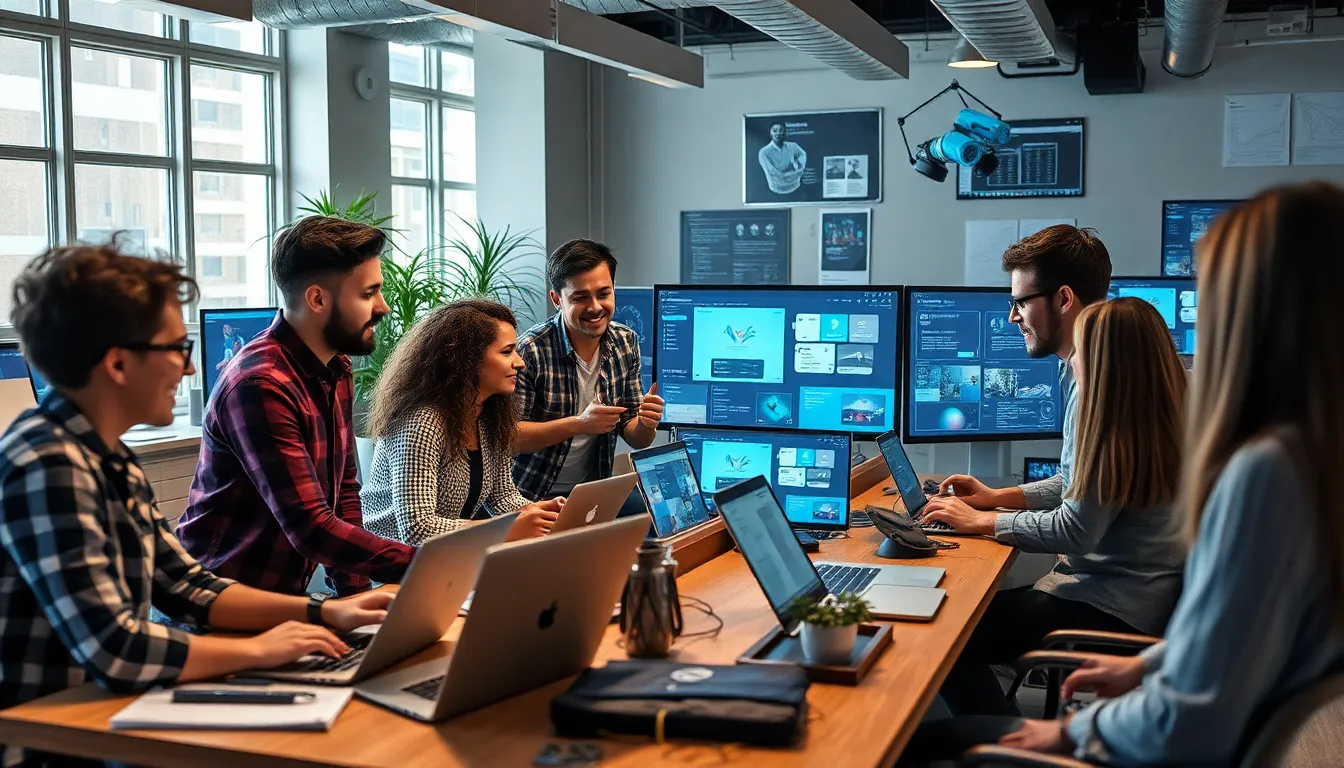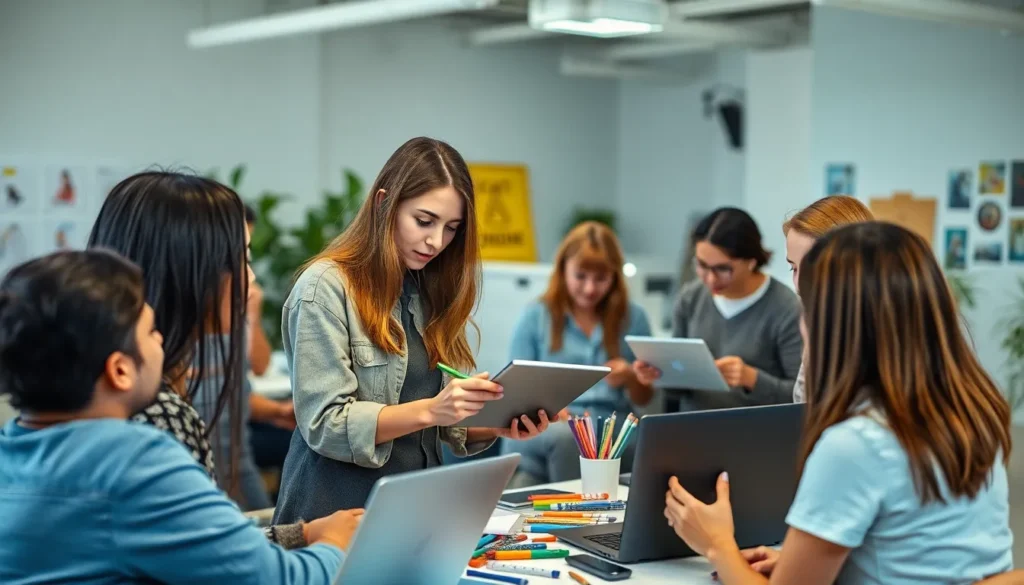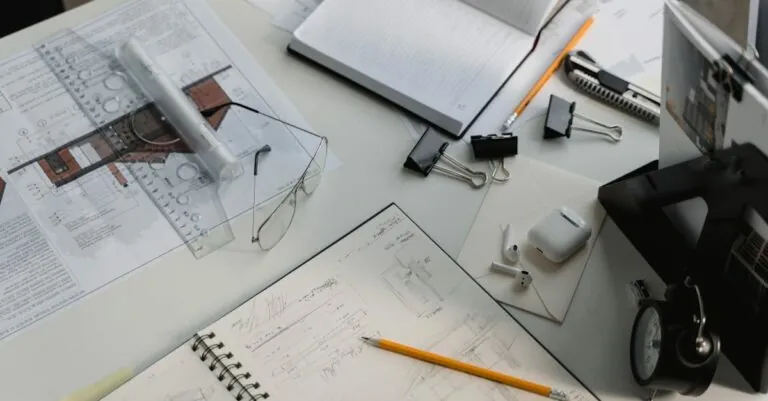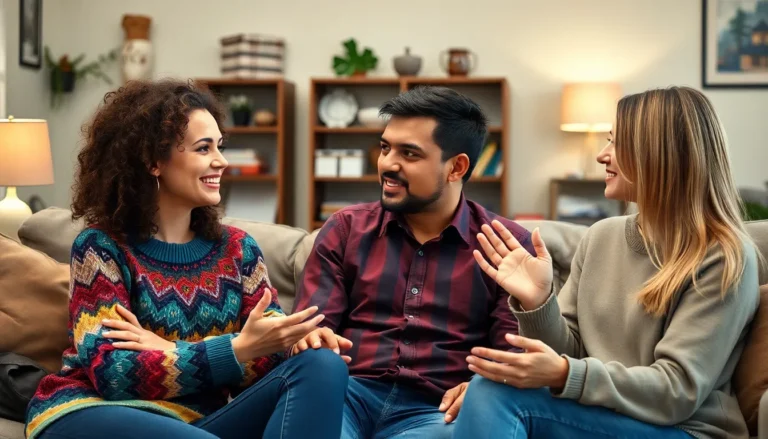Table of Contents
ToggleIn a world where creativity meets technology, the possibilities are endless. Imagine a painter who can unleash their brush strokes with a flick of a finger or a musician composing symphonies with just a few taps. Technology-enhanced creativity isn’t just a buzzword; it’s a game-changer that’s transforming how we express ourselves.
Gone are the days when creativity was confined to traditional tools. With the rise of innovative apps and digital platforms, anyone can tap into their artistic side—whether they’re a seasoned pro or a weekend doodler. So, buckle up and get ready to explore how technology is not just enhancing creativity but also making it fun, accessible, and downright exciting. Who knew unleashing your inner genius could be this easy?
Understanding Technology-Enhanced Creativity
Technology-enhanced creativity merges traditional creativity with digital tools, enabling a new realm of artistic possibilities. This integration opens pathways for exploration, allowing creators to push the boundaries of their imagination.
Definition and Concept
Technology-enhanced creativity refers to the ways digital tools amplify and transform creative processes. Digital platforms, software, and applications facilitate creation across various mediums, including visual arts, music, and writing. Artists can manipulate images, compose music, and write stories with greater ease and efficiency. Collaboration tools further enhance this experience by connecting creators globally, fostering a vibrant community of shared ideas and feedback. Access to online resources enables individuals to learn new skills and techniques, democratizing the creative process.
Importance in Modern Society
In today’s society, technology-enhanced creativity plays a pivotal role in innovation and expression. Diverse fields such as marketing, education, and entertainment rely on creative solutions to capture audiences’ attention. This approach fosters an inclusive environment where individuals from different backgrounds can express unique perspectives. Technology also accelerates project timelines, allowing for rapid experimentation and iteration. With the demand for fresh ideas continually growing, the ability to leverage technology makes creativity not only relevant but essential in many industries.
The Role of Technology in Creative Processes

Technology significantly impacts creative processes, enhancing artistic expression and accessibility. Digital tools and platforms empower individuals to explore their creativity regardless of their skill levels.
Tools and Platforms for Creativity
Numerous software applications, such as Adobe Creative Cloud and Procreate, facilitate artistic creation across various mediums. Graphic designers rely on platforms like Canva for easy design without extensive training. Musicians turn to applications like GarageBand and Ableton Live to produce high-quality music from home. Writers benefit from tools such as Scrivener that streamline the organization of thoughts and manuscripts. Each of these tools provides unique features tailored to specific creative disciplines, constantly pushing boundaries in artistic production.
Collaboration and Communication Technologies
Real-time collaboration platforms like Google Workspace and Microsoft Teams revolutionize how creative teams work together. Artists share ideas through visual boards in applications like Miro, enhancing brainstorming sessions. Filmmakers streamline production with cloud-based editing platforms that allow for seamless sharing and feedback. Social media facilitates connections, enabling creators to receive instant input from diverse audiences. By utilizing these technologies, creative professionals foster innovation while expanding their networks and tapping into collective creativity.
Benefits of Technology-Enhanced Creativity
Technology-enhanced creativity brings numerous advantages, primarily by broadening access and fostering innovation. Creators at all levels can benefit from these enhancements.
Increased Accessibility and Reach
Technology significantly increases accessibility for artists and creators. With digital tools, individuals can create without traditional barriers. Software like Canva and Adobe Spark allows anyone to design with ease. These platforms empower users regardless of skill level. Furthermore, social media connects creators to a global audience, enabling instant sharing and feedback. Online courses and tutorials expand learning opportunities efficiently. Accessibility shifts artistic expression away from exclusive venues. It allows diverse voices to emerge and contribute to the creative landscape.
Enhanced Innovation and Idea Generation
Innovation thrives through technology-enhanced creativity. Digital tools enable rapid experimentation, allowing creators to explore multiple ideas quickly. For instance, music production software like GarageBand invites artists to experiment with sounds seamlessly. Graphic designers benefit from 3D modeling tools that spark new design concepts. Collaboration platforms enhance brainstorming sessions across borders and time zones. Remote teams can share and refine ideas instantly, fostering a continuous exchange of creativity. As a result, technology serves as a catalyst for fresh ideas and inventive solutions across various industries.
Challenges and Limitations
Technology-enhanced creativity faces several challenges and limitations that can hinder its potential impact on the creative process.
Dependence on Technology
Reliance on technology can limit creativity in some cases. Artists often feel compelled to use popular tools, which may stifle originality. Processes become routine, as many creators opt for familiar software rather than experimenting with new techniques. Dependence can also lead to frustration, especially when encountering technical difficulties or software limitations. Furthermore, access to high-quality tools is unequal, creating disparities among artists based on available resources.
Balancing Technology with Human Creativity
Striking a balance between technology and human creativity remains crucial. While digital tools streamline the creative process, over-reliance on them may diminish individual expression. People often find that originality flourishes when they integrate traditional methods with modern tools. Encouraging human intuition, emotion, and spontaneity ensures that technology enhances rather than replaces creativity. Additionally, fostering environments where these elements coexist promotes innovation while keeping the artistic spirit alive.
Technology-enhanced creativity is transforming the way individuals express themselves artistically. By merging traditional practices with digital tools, it opens doors to new possibilities and innovative approaches. This evolution not only democratizes creativity but also fosters collaboration among artists worldwide.
While challenges exist, such as potential over-reliance on technology, the benefits far outweigh the drawbacks. Embracing both traditional and modern methods can lead to a richer creative experience. As technology continues to evolve, it will undoubtedly play a crucial role in shaping the future of artistic expression. The journey of creativity is now more exciting and accessible than ever before.







